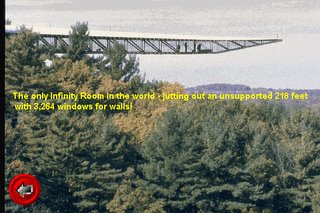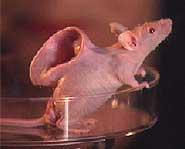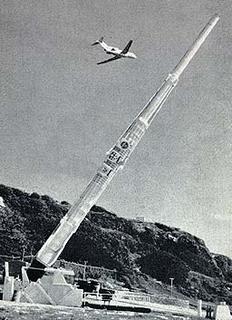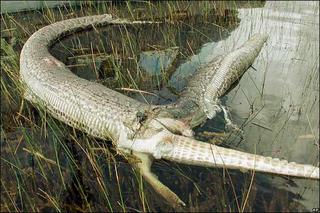You have got to see this fish!
The Search for the Giant Catfish
Please select the audio link as well.
Friday, December 09, 2005
Environmental Science: Honor Killings
After talking about Western and Non-Western Culture relating to environmental and social issues, I submit this link: Honor Killings
Please click on the audio link as well.
Please click on the audio link as well.
Monday, November 28, 2005
Environmental Science: Invasive Species
The Tamarisk (Salt Cedar) is an invasive plant from the Eurasian plains. It is current playing havoc in the Western United States.
NPR Audio Story: Tamarisk Taking Over Western States
Other Links:
Exotic Tamarisk on the Colorado Plateau
Alien Plant Invaders of Natural Areas
Invasive Species Info.gov
NPR Audio Story: Tamarisk Taking Over Western States
Other Links:
Exotic Tamarisk on the Colorado Plateau
Alien Plant Invaders of Natural Areas
Invasive Species Info.gov
Environmental Science: Seattle and Greenhouse Gases
As mention in class, Seattle is try to control it's greenhouse gas emission.
NPR STORY: Seattle Tackles Greenhouse Gases
Click on the Audio Link.
NPR STORY: Seattle Tackles Greenhouse Gases
Click on the Audio Link.
Labels:
Audio,
Environmental Science,
Global Warming,
Greehouse gases,
NPR
Wednesday, November 02, 2005
Engineering and College Physics: Starting Salaries
Today I got off on a rant about strating salaries and the need for hard work in the sciences. After some digging I found sevral sites with current starting salaries based on degreee and major. Some even have good advice on what to expect during your job intereview.
Starting Salaries Expectations
Lucrative Salaries
Class of 2004 Starting Salaries
This last link is a pdf file and has information about chemistry majors. It even contains information on starting salaries based on grades.
Starting Salaries Expectations
Lucrative Salaries
Class of 2004 Starting Salaries
This last link is a pdf file and has information about chemistry majors. It even contains information on starting salaries based on grades.
Tuesday, November 01, 2005
Engineering and College Physics: House on the Rock

I mention House on the rock as an example of a cantilever structure. The picture is the Infinity room at House on the Rock. The house itself is interesting, but the whole complex can be quite the tourist trap. Go once in your life, spend a day, then flee. (The tour continues.... Trust me if you go to House on the Rock. Those three words are a slice of hell and a year later they are hysterically funny.)
Labels:
Buildings,
House on the Rock,
Images,
Physics,
Structures
Environmental Science: Clean Water For EL Salvador

Contaminated water kills thousands of Salvadorans every year. Most are children.
You may read the whole story at NPR.org.
Environmental Science: Where is The Water Treatment Plant
Remember November 3rd is our tour of the Water Pollution Control Plant.
Where is it. Here is a Map.
You can find Direction from the college to the plant here: Directions
Where is it. Here is a Map.
You can find Direction from the college to the plant here: Directions
Sunday, October 23, 2005
Thursday, October 20, 2005
Environmental Science: Bioengineering

As mentioned in class: A mouse with a Human ear "growing" on it's back.
The following is text from an email explaining this image.
Forwarded-by: bostic@bsdi.com (Keith Bostic)
Forwarded-by: Todd Kover
BOSTON (AP) -- It sounds like something from a carnival side
show: ``The Mouse With A Human Ear On Its Back.'' But it's real.
It's alive.
That mouse, and others of its kind, are at the leading edge of a
science known as tissue engineering, which allows laboratories to
grow skin and cartilage for transplant in humans.
The mouse in question, in the laboratory of University of
Massachusetts anesthesiologist Dr. Charles Vacanti, is helping
researchers refine the technology that someday will allow them to
regrow ears and noses for people.
Linda Griffith-Cima, an assistant professor of chemical
engineering at Massachusetts Institute of Technology who helped
Vacanti grow the first ears on mice, said she did it at the request
of a plastic surgeon from Children's Hospital, Dr. Joe Upton.
``He said, `I see these kids who are born without ears. And I
have boys who come in whose ears have been chewed off in playground
fights, and I can't sew them back on because they're so chewed
up,''' Griffith-Cima said.
So she set about creating an ear-like scaffolding of porous,
biodegradable polyester fabric. Then she and Vacanti distributed
human cartilage cells throughout the form, and implanted the
prototype ear on the back of a hairless mouse.
The mouse, specially bred to lack an immune system that might
reject the human tissue, nourished the ear as the cartilage cells
grew to replace the fiber. The mouse remains healthy and alive
after the ear is removed, the researchers said.
``You end up with a piece of cartilage in the shape of an ear,''
Griffith-Cima said.
Griffith-Cima's and Vacanti's research follows in the footsteps
of Vacanti's older brother, Dr. Joseph Vacanti, a surgeon who does
liver transplants at Children's Hospital, and his close friend Dr.
Robert Langer, professor of chemical engineering at MIT.
Twelve years ago, when Joseph Vacanti became head of the
hospital's transplant program, he started searching for ways to
grow new liver tissue in sick children instead of waiting for donor
organs. Too many of his patients died before they could get
transplants.
Now Joseph Vacanti can implant a polymer scaffolding in a
diseased rat's liver and transplant new liver cells. The new liver
will grow and function for up to six weeks, he said.
Langer, the Vicantis and other scientists now have managed to
grow liver, skin, cartilage, bone, ureters, heart valves, tendons,
intestines, blood vessels, and breast tissue on such polymers,
Langer said.
Although no such tissue products have yet become available to
the public, skin products are in the advanced stages of clinical
testing on humans, and heart valves are in the early phase of
clinical trials.
Someday, ears and noses will be grown in a test tube using the
patient's own cells on a custom-designed scaffold. Other tissues
will be grown from donated cells on polymer devices placed in the
patient's body.
``Some tissues, like cartilage, we can grow all the way to
perfect tissue before putting it in,'' Joseph Vacanti said. ``In
other tissues, we only grow it for a short time, then we implant it
and the body takes over.''
Dr. Michael Miller, an associate professor of plastic surgery at
the University of Texas' Anderson Cancer Center, said the
technology is promising.
``In fact, I think the next major advances to come in the field
of reconstructive surgery are going to be due to tissue
engineering,'' said Miller, who is working with Rice University
scientists trying to grow bone tissues in shapes that are useful
for plastic surgery.
The chemical engineers say their job now is to create better
polymers. It's one thing to grow cartilage that holds a shape for
cosmetic surgery, another to grow cartilage that could mend a
shattered knee, Griffith-Cima said.
Dr. Peter Theran, director of laboratory animal welfare for the
Massachusetts Society for the Prevention of Cruelty to Animals,
said he had not reviewed the Vacantis' research, but was not
opposed to it.
``Generally speaking, we support the use of tissue culture work
because often it means using fewer live animals'' than other
procedures, such as transplanting animal organs into humans.
Labels:
Bioengineering,
Earth,
Environmental Science,
Images,
Mouse
Tuesday, October 18, 2005
Environmental Science: Water Treatment Plant Tours
The tours for the Water pollution Control Plant are set. Mark your calender: Thursday NOV. 3.
Tues-Thurs Classes: 9:30 AM Nov. 3
MWF Classes: 1:00 PM Nov. 3
Car pool and meet at the site!
Tues-Thurs Classes: 9:30 AM Nov. 3
MWF Classes: 1:00 PM Nov. 3
Car pool and meet at the site!
Friday, October 14, 2005
Environmental Science - Bears
I mention Timothy Treadwell in class as the freelance bear reseacher and watcher that was later killed by a bear.
His film and story are here : Grizzly Man
His film and story are here : Grizzly Man
Monday, September 12, 2005
Geology - Pyroclastic Flow
I promised you movies of Pyroclastic Flow. Here they are.
Movie 1 - Mount Pinatubo by M. T. Dolan
Movie 2 -Tar River Valley
Movie 3 - Alantic Ocean
Other Pyroclastic flow sites
http://www.geo.mtu.edu/volcanoes/hazards/primer/pyro.html
Granular Volcano Group
USGS - Mt. St. Helens
Movie 1 - Mount Pinatubo by M. T. Dolan
Movie 2 -Tar River Valley
Movie 3 - Alantic Ocean
Other Pyroclastic flow sites
http://www.geo.mtu.edu/volcanoes/hazards/primer/pyro.html
Granular Volcano Group
USGS - Mt. St. Helens
Friday, September 09, 2005
Physics: The Atomic Cannon
As mentioned in class the U.S. built a artillery cannon capable of firing nuclaer shells. Pretty Cool. Check out the movies too!
Atomic Cannon
Atomic Cannon
Physics: Projectile Motion and the HARP Project

Details on the HARP GUN and the life of Dr. Gerald Bull.
Another HARP GUN Link is here: The HARP Project
Saturday, August 27, 2005
Geology: Diamond Mining
As I mentioned in class there is a place in Arkansas that let you hunt for diamonds. The best part is you can keep whatever you find!
CRATER OF DIAMONDS STATE PARK
CRATER OF DIAMONDS STATE PARK
Thursday, August 25, 2005
WELCOME BACK!
Nice to see you again MCC students.
Just a Reminder: Labs start next week. That's the week of the 29th of August.
Just a Reminder: Labs start next week. That's the week of the 29th of August.
Tuesday, April 19, 2005
Spring 2005 Final Exam Schedule
Her is the Final Exam Schedule for my science classes.
College Physics 10 AM Monday May 16
Astronomy NOON Monday May 16
Environmental Science 8 AM Tuesday May 17
Meteorology 8 AM Wednesday May 18
Engineering Physics NOON Wednesday May 18
Remember Your Note Sheet(8-1/2 by 11), Calculator, #2 Pencil and Your Brian!
College Physics 10 AM Monday May 16
Astronomy NOON Monday May 16
Environmental Science 8 AM Tuesday May 17
Meteorology 8 AM Wednesday May 18
Engineering Physics NOON Wednesday May 18
Remember Your Note Sheet(8-1/2 by 11), Calculator, #2 Pencil and Your Brian!
Tuesday, March 29, 2005
Biology and Anthropology: Human Evolution
I often mention the ancestor of Man in class. Here is a link to an activity on human evolution.
Human Evolution Activity
Human Evolution Activity
Environmental Science: Evolution and Extinction
Here is a little game I came across that provides a good demonstration of species adapting to changing in the environment.
NOVA ONLINE Game: Evolution in Action
NOVA ONLINE Game: Evolution in Action
Wednesday, March 16, 2005
Environmental Science: ANWR OIL Drilling
Let the Drilling Begin!
Congress OKs ANWR
It will probably take 10 years before the oil starts flowing. The ANWR oil fields are expected to generate 1 million barrels of oil a day. Hardly a dent in the world demand. Most of the oil will probably be exported for a higher price if the U.S. dollar stays weak.
Here is a timeline leading up to the vote today. ANWR TIMELINE
Just in time too, because Oil Price just hit a record high today at $55+ per barrel. OPEC met today to vote on increasing oil production, but it is in doubt whether or not that will help lower oil prices. Even, ANWR will probably not help with that because of record demand. Can you say get use to $2/gallon gasoline.
OIL Demand outpaces supply!
Congress OKs ANWR
It will probably take 10 years before the oil starts flowing. The ANWR oil fields are expected to generate 1 million barrels of oil a day. Hardly a dent in the world demand. Most of the oil will probably be exported for a higher price if the U.S. dollar stays weak.
Here is a timeline leading up to the vote today. ANWR TIMELINE
Just in time too, because Oil Price just hit a record high today at $55+ per barrel. OPEC met today to vote on increasing oil production, but it is in doubt whether or not that will help lower oil prices. Even, ANWR will probably not help with that because of record demand. Can you say get use to $2/gallon gasoline.
OIL Demand outpaces supply!
Saturday, February 26, 2005
Environmental Science: Green and Mean SUVs
American Council for an Energy-Efficient Economy (ACEEE) rated cars, SUVs and other vechiles this year for Environmentally Friendly Green Vechiles. The Ford Escape Hybrid gets high marks, while the Ford Excursion gets spankings.
You can read the findings in Money magzine: Ford SUVs 'Green' and 'Mean'
You can read the findings in Money magzine: Ford SUVs 'Green' and 'Mean'
Tuesday, February 22, 2005
Environmental Science: Coal Mine Disaster
Current Event as mention in class. You can't use this for your Environmental Article.
Chinese Mining Accident
Chinese Mining Accident
Tuesday, February 01, 2005
Environmental Science: China's Only Child
Overpopulation.com has many insteresting thing on the issues of world population. You may find the threaded discussion about China's one child policy interesting as well.
You may want to look at the news about China's economic growth. HERE
China has recently revised it's one child policy. You may read an interview with Zhao Bingli, vice minister of the State Family Planning Commission. HERE
You may want to look at the news about China's economic growth. HERE
China has recently revised it's one child policy. You may read an interview with Zhao Bingli, vice minister of the State Family Planning Commission. HERE
Friday, January 28, 2005
Meteorology: Climate Prediction and Supercomputers
Most Climate Prediction models that watch the greenhouse effect on Earth are run on huge supercomputer in a research lab. However, most off the shelf PC and Mac are capable of running the same model prediction if given enough time. Your computer's CPU spends alot of time being idle. Why not use that idle time to do some real science. Climateprediction.net is a site that gives you a screensaver that works on climate change models. Check it out other useful at Massive Parallel Computng Projects or Distributed Computing.


Thursday, January 27, 2005
Tuesday, January 25, 2005
Environmental Science: Class Schedule
Those of you who miss the syllabus, you can get the Class Schedule Here.
Subscribe to:
Posts (Atom)


